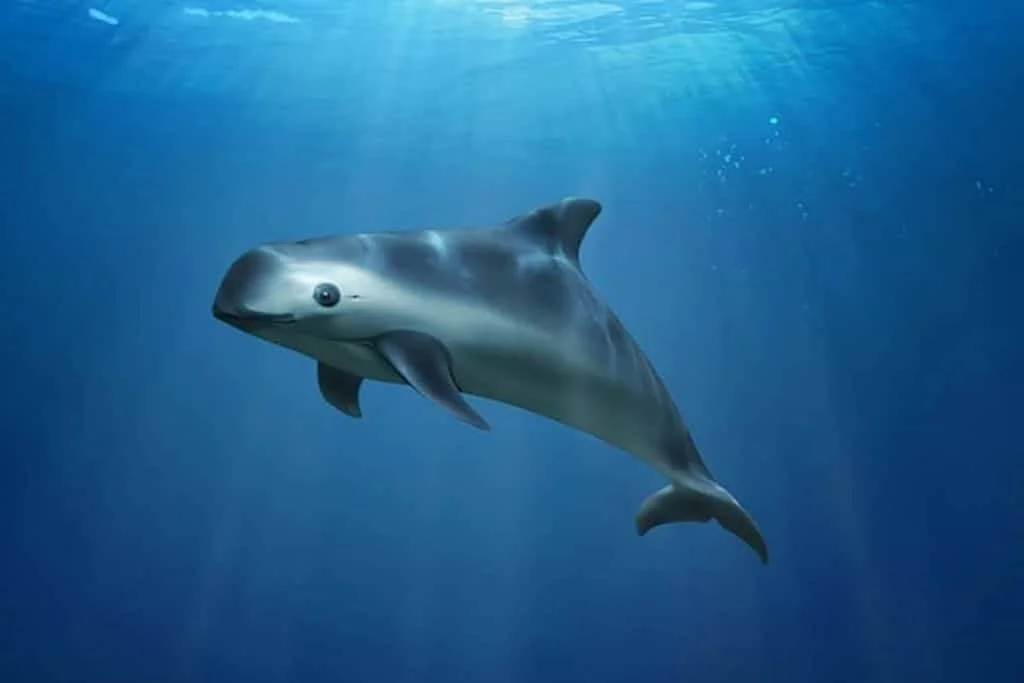Vaquita Porpoises Teeter on the Edge of Extinction By Writer and Contributor Emily McGinn
Vaquita. Credit: NOAA Fisheries
In Palos Verdes, we are accustomed to seeing dolphins, porpoises, whales and other marine life just off the coast of the Palos Verdes cliffs and beaches. Whale-watching is a popular pastime in the area, and spotting marine wildlife often brings excitement to locals and tourists alike.
Just down the coast in Baja California, a unique small species of porpoise, the vaquitas, swim in their own habitat, a northern portion of the Gulf of California. However, the vaquitas, like so many other modern species, are facing a major challenge: they are a critically endangered species.
Image credit: https://www.worldwildlife.org/species/vaquita
Recent estimates pin the wild vaquita population at less than 20 porpoises or less, making it the most endangered marine mammal in the world, according to the National Oceanic and Atmospheric Administration (NOAA).
The vaquitas are shy creatures, traveling in small groups and largely avoiding motorized boats. They are also known for their small size, growing to only 4 or 5 feet in length. The vaquitas’ status as a critically endangered species is exacerbated by the fact that it has such a small niche, living in a region of water that spans only about 1,520 square miles. There, they spend their time feeding on small fish, shrimp, squid and similar small marine creatures.
The vaquitas are relatively new to the scene of known marine wildlife, as they were not discovered until 1958, according to the World Wildlife Fund. Measurements of population size began in 1997, when the population was measures at about 600 individuals. By 2008, vaquita numbers had dropped to 200. In 2015, the population had drastically dropped once more, to about 60 individuals. By 2016, only 30 vaquitas remained in the wild, according to the NOAA.
Image credit: Free the Ocean
What prompted the rapid decline of the vaquitas? It does not have anything to do with behavior or food availability — the only known concern for vaquitas is illegal fishing practices.
Fishing is a major source of income for those living in the vaquitas’ range. It was discovered that legal fishing practices, which were less regulated at the time, were harming the vaquita population as it began to decline. The vaquitas’ particular nemesis is a tool popular in the area called a gillnet, which is a wall of netting that spans the water column and catches passing fish. While fishermen are not targeting vaquitas with gillnets, they can unintentionally become caught in the gillnets, struggle and drown.
Over time, more regulations were passed as the Mexican government worked with different agencies and scientists to limit the decline of the vaquitas. In 2015, Mexico instituted a two-year gillnet ban in the area and in 2017, gillnets were banned permanently for the fishing of most species. However, the vaquita population continues to face the challenge of illegal gillnet use.
Illegal fishing of another species, the totoaba, is especially harmful to the vaquitas. The totoaba is a large, endangered fish that lives in the same region as the vaquitas and is a similar size to the porpoises. Fishermen illegally catch totoaba for their swim bladders, which are an ingredient in a Chinese soup that supposedly has medicinal value. Therefore, fishermen can smuggle and sell the bladders illegally in China for high prices. Since totoaba and vaquitas are similar in size, gillnets intended to catch totoaba often catch vaquitas, as well.
Although international efforts to save the vaquita have helped curb the decline, illegal fishing remains a major threat and vaquitas still face critical endangerment. Conservation groups and the Mexican government continue to monitor the vaquita population and look for new ways to ensure its protection.
More information: National Marine Mammal Foundation
Emily McGinn: A Dedicated Journalist
Fueled by passion and curiosity, Emily McGinn is a fervent journalist whose heart beats for truth and creativity. As a graduate of California Baptist University, Emily’s academic voyage is adorned with rich interests in environmental science, political science, and graphic design. Her portfolio is a mosaic of hard work and dedication, evidenced by a repertoire of content that stands as a testament to her journalistic commitment and academic pursuits.
Emily doesn’t just chase stories; she seeks the truth with a thoughtful blend of accuracy, respect, and diligence. Her journalism transcends mere reporting, reflecting a meticulous effort to maintain integrity and excellence in every piece. Inspired by a profound respect for her craft, Emily is unafraid to push boundaries, perpetually aiming to enhance the quality of her work.
Experimentation and innovation light up Emily’s journey, especially in the realm of design. With an artistic flair, she loves exploring the vibrant intersections of journalism and graphic design, continuously experimenting to breathe visual life into stories and publications.
In Emily's world, journalism is not merely a career choice, but a calling—a space where passion meets purpose, and stories are crafted with care and conscience. In the garden of journalism, she continues to cultivate a bouquet of skills and experiences that resonate with her dedication to truth, creativity, and excellence.








